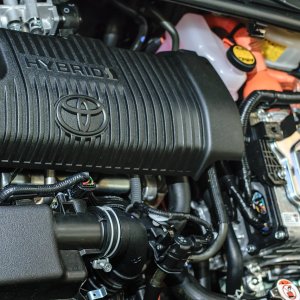Challenging Times for Passenger Transport Industry

STORY INLINE POST
All companies must face a cost-efficiency battle on a daily basis. But when external factors come into play, this quest becomes a question of survival. At the end of 2016, Mexico said goodbye to the gasoline subsidies that had reigned since the creation of PEMEX. After being the last member of the OECD without liberalized gasoline prices, Mexico took a step forward. But progress came at a cost: a 20 percent increase to be exact. According to Jaime Jaime, President of the National Chamber of Passenger and Tourist Transportation (CANAPAT), fuel is the main input for interurban transport companies, representing up to 30 percent of their operating costs, depending on available routes and bus models.
After the price increase on fuel, labeled the gasolinazo, companies suffered a 6 percent increase to their operating costs, which was further aggravated by volatility in the pesodollar exchange rate. Spare parts are commonly priced in dollars, resulting in added costs for all repair and maintenance operations. “Renovation strategies are also affected by dollar prices, even though the final payment might be in pesos,” says Jaime. “The negotiation is based on a certain number of dollars, which impacts a company's future investments.”
Companies have their own renovation strategies but they can also take advantage of the scrappage scheme implemented by the government to reduce costs, according to Jaime. But CANAPAT found a weak point in the program: the limited number of units that can be scrapped. According to the Ministry of Transportation and Communications (SCT), a maximum of 6,000 vehicles over 10 years of age can be renovated every year. This number includes both bus and truck units and 50 percent of the renovations are destined for owner operators. “As a result, applications ran out in September for large fleets,” explains Jaime.
With renovation comes new technology adoption. Jaime says that both the Chamber and its members are in favor of stricter fuel and emissions regulations. But they ask the government for certainty regarding quality diesel availability throughout the country. “We want to implement new engine and emission control technologies but we need the support of the government, including incentives to cover the 30 percent increase in vehicle costs inherent to these technologies,” he says. Jaime explains that an analysis of cost-effectiveness is necessary since CANAPAT members cannot raise tariffs easily. “Our demand is highly sensitive to price,” he says. “If we increase tariffs too much, our 500-600km routes might start competing with low-cost airlines.”
Competition is a foe that passenger and tourist transportation companies must face. Low-cost airlines are bus lines’ biggest competition but Jaime says planes still face limitations, specifically distance and accessibility. “The government is promoting national tourism to beaches and historic towns, most of which can only be reached by bus.” Other initiatives like the interurban train between Mexico City and Toluca will bring new competition to the market but Jaime is not fazed by these. “Train services are very good worldwide but we know most systems are subsidized by city or state governments,” he says. “The most cost-effective alternative to improve interurban mobility is to develop the bus network.”
The informal side of the business is another kettle of fish. SCT has granted 100,000 number plates for passenger and tourist transportation and of this number, approximately 50 percent operate irregularly. Jaime explains there is a new threat he calls simulated tourism, where companies with formal tourism number plates sell individual tickets and pretend people are traveling in a group. “These companies are not regulated and their drivers are not certified to offer these services, creating unfair competition,” he says.
CANAPAT has gone to great lengths to train and certify companies and operators, legalizing their businesses. The chamber signed an agreement with the National Council for Normalization and Certification of Labor Skills (CONOCER) to certify drivers. It offers middle-management training to members and a Master’s degree in collaboration with UNAM, which has already seen its second generation of graduates. This program is directed at well-positioned executives to help them professionalize their business. Jaime explains he is looking to expand CANAPAT’s degree offering but the specialized profile of educators limits the number of people that can be accepted into the program.






















